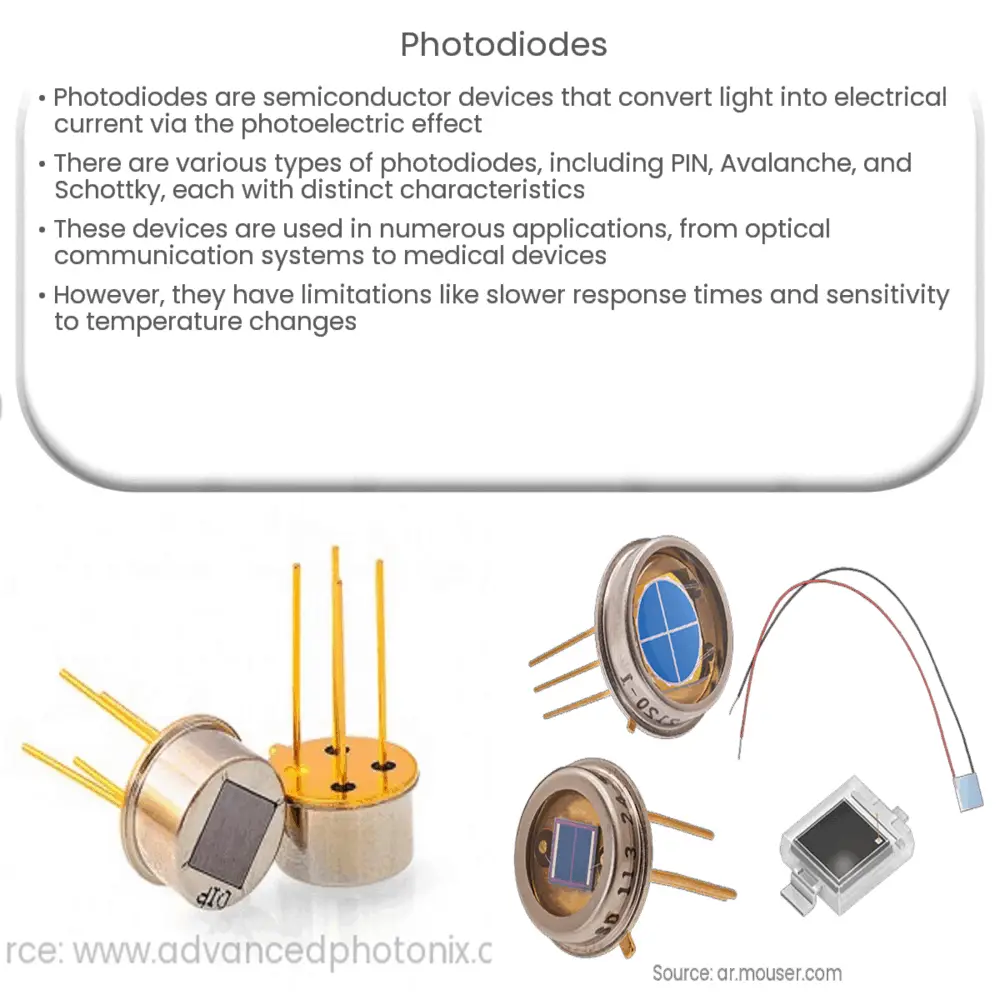Explore the workings of photodiodes, their types, applications, characteristics, and limitations. Dive into the light-to-current world!”

Introduction to Photodiodes
A photodiode is a semiconductor device that converts light into an electrical current. The device operates by exposing its junction to light, which prompts a photoelectric effect. In simple terms, when light photons are absorbed by the photodiode, they excite the electrons, thereby generating electron-hole pairs. This results in a current flow if the device is connected to a circuit.
Working Principle of Photodiodes
Photodiodes function on the principle of the photoelectric effect. When light falls on the p-n junction of the photodiode, it is absorbed and electron-hole pairs are created. The energy of the absorbed light is transferred to an electron in the atom of the semiconductor device. If the energy of the light is greater than the bandgap of the semiconductor material, the electron is excited and jumps from the valence band to the conduction band, leaving behind a hole.
Types of Photodiodes
Applications of Photodiodes
Photodiodes are used in a wide variety of applications due to their ability to convert light into electrical signals. Some common uses include:
Photodiodes also find application in medical devices, barcode scanners, and even in smoke detectors. Their versatile nature makes them a vital component in many areas.
How Photodiodes Differ from LEDs
While both photodiodes and Light Emitting Diodes (LEDs) are diodes, their applications differ significantly. An LED emits light when voltage is applied, whereas a photodiode generates current when it is exposed to light. Essentially, the LED works as a light source, while the photodiode works as a light sensor.
Characteristics of Photodiodes
Photodiodes have several characteristics that define their operational efficiency:
Limitations of Photodiodes
Despite their widespread utility, photodiodes do have some limitations. They have a slower response time compared to some other light-detection technologies, such as photomultiplier tubes. Furthermore, photodiodes can be sensitive to temperature changes and may require temperature control for precise measurements. Photodiodes also have a lower sensitivity in comparison to other light-detecting devices, particularly at lower light levels.
Conclusion
In conclusion, photodiodes are a vital tool in a variety of applications, from telecommunications to environmental science, due to their ability to convert light into an electrical signal. While they have their limitations, their versatility and efficiency make them indispensable in modern technology. As our understanding of these devices continues to grow, so too will their potential uses and applications, further enhancing their role in our everyday lives.

